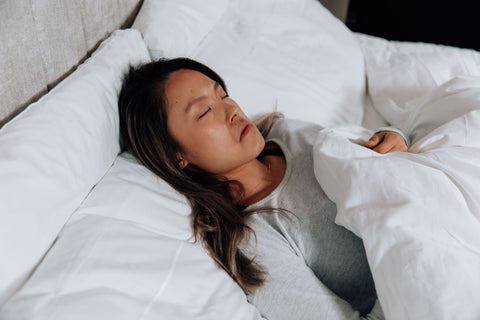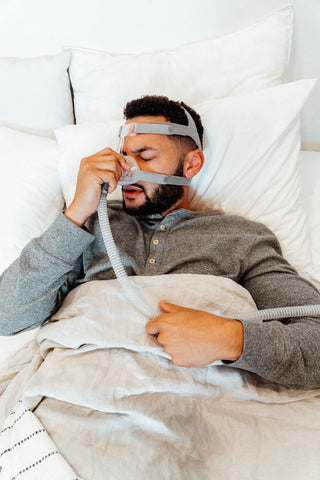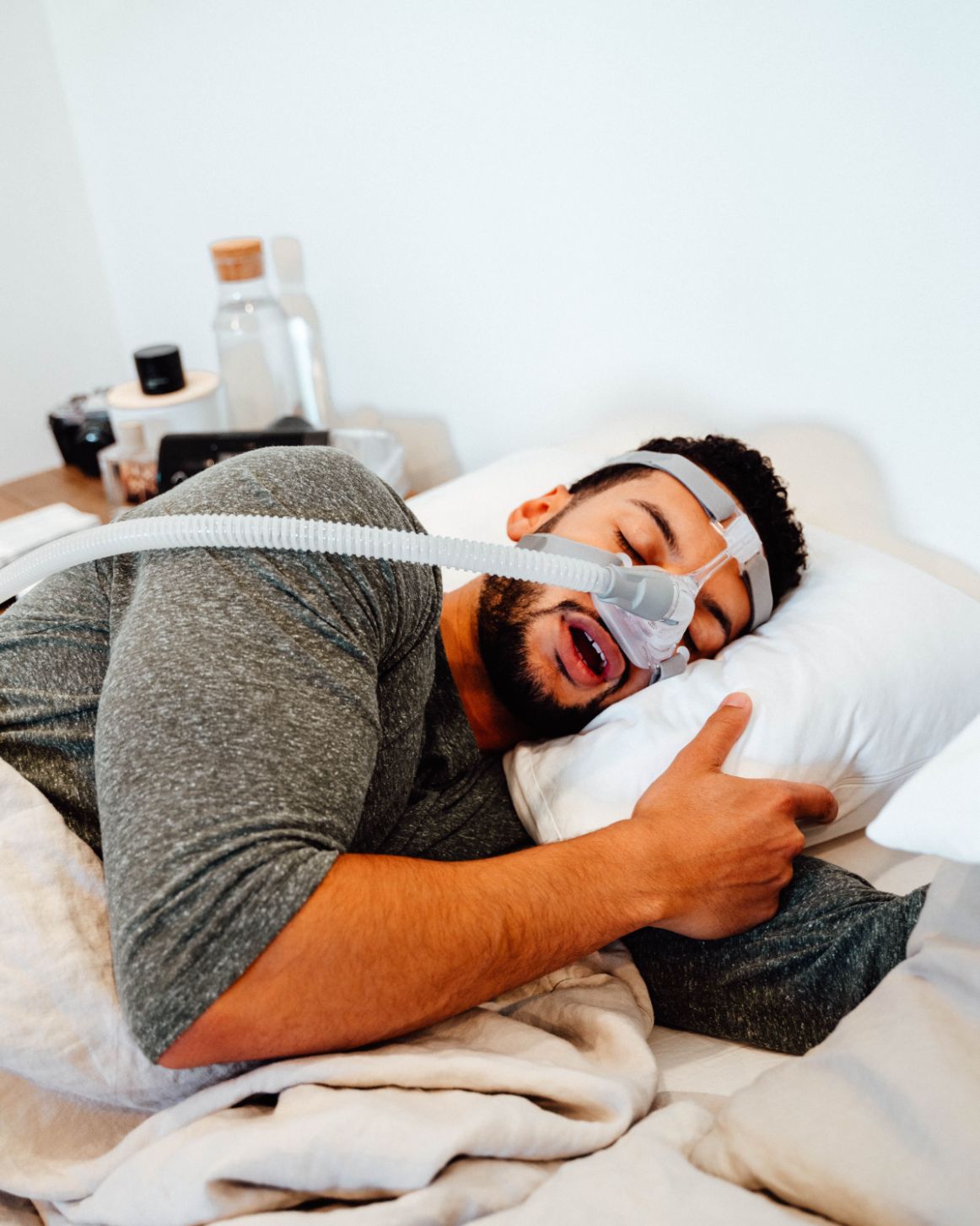It’s estimated that more than a quarter of adults between the ages of 30 and 70 suffer from a form of sleep apnea. Many go undiagnosed or don’t pursue treatment after receiving a diagnosis.
While that decision may sound harmless, it can actually be life-threatening due to the relationship between sleep apnea and oxygen levels.
Before we dive into the dangers of sleep apnea and its effect on oxygen levels, let’s look at the different types of sleep apnea.
Understanding the Different Types of Sleep Apnea
The main types of sleep apnea are:
Obstructive sleep apnea, the most common type, is caused by relaxed throat muscles that narrow and block the airway.
Central sleep apnea occurs when the brain doesn’t send the right signals to the muscles within the body responsible for respiration.
Complex sleep apnea, also commonly called treatment-emergent central sleep apnea, consists of someone having both obstructive and central sleep apnea.

All three types of sleep apnea disrupt breathing patterns and lead to poor quality sleep. Snoring, choking, and gasping during sleep are all common in sleep apnea sufferers. But the symptoms don’t stop there.
Sleep Apnea Symptoms
Although there are three different types of sleep apnea, the symptoms are similar across the board. If you experience some of the symptoms listed below, consult your physician about undergoing a sleep study to determine whether or not you suffer from sleep apnea.
Symptoms include:
- Snoring
- Lapses in breathing
- Gasping for breath and/or snorting
- Dry mouth
- Sore throat upon waking up
- Coughing
- Difficulty falling or staying asleep
- Morning headaches
- Daytime sleepiness/fatigue
- Depression
- Mood changes, including irritability
- Issues with memory
- Poor concentration
Of these symptoms, snoring is most commonly associated with sleep apnea. But not everyone with sleep apnea snores. On the other hand, snoring doesn’t mean that you definitively have sleep apnea.

That’s why it’s so important to get a sleep test to determine whether or not you’re suffering from sleep apnea. If left unchecked, it can permanently damage your body and lead to serious health concerns.
The most concerning aspect of sleep apnea is that it lowers oxygen in the body to dangerous levels.
How Sleep Apnea Lowers Oxygen Levels
For sleep apnea sufferers, breathing stops repeatedly during sleep. When breathing ceases, blood oxygen levels dip. Having low oxygen levels during sleep can cause you to feel extremely fatigued in the morning.
In obstructive sleep apnea, the most common kind, sufferers experience intermittent oxygen desaturation in combination with periods where breathing ceases altogether.
They may also experience hypopnea (shallow breathing).
Obstructive sleep apnea can range in severity and is measured with a system called the apnea-hypopnea index, also known as the AHI. The AHI allows for the measurement of breathing pauses that sleep apnea sufferers experience each hour.
Measurements are as follows:
- Mild sleep apnea consists of an AHI between 5 and 15 episodes per hour
- Moderate sleep apnea consists of an AHI between 15 and 30 episodes per hour
- Severe obstructive sleep apnea consists of an AHI greater than 30 episodes per hour
During a sleep apnea test, blood oxygen levels are also recorded. Normal oxygen saturation is typically 96 to 97 percent. Oxygen saturation levels that measure below 90 percent are considered harmful to the body.
A measurement in the 80 to 89 percent range is considered moderate, while saturation that drops below 80 percent is considered severe.
Low oxygen saturation leads to a myriad of health problems, which we’ll take a look at next.
Why Low Oxygen is Dangerous
For those who have sleep apnea, oxygen levels are inconsistent and include sudden drops in blood oxygen levels. This increases blood pressure and puts a huge strain on the cardiovascular system.
Due to this, those with sleep apnea have a higher risk of developing high blood pressure (hypertension) and heart problems.
Having obstructive sleep apnea may increase your risk of heart attack or stroke. An abnormal heartbeat is also more likely, such as atrial fibrillation.

If you develop heart disease, multiple episodes of low blood oxygen during sleep can cause sudden death from an abnormal or irregular heartbeat.
Low blood oxygen levels and sleep apnea may also increase your risk of developing insulin resistance, type 2 diabetes, and metabolic syndrome.
For these reasons, untreated sleep apnea can be fatal.
According to The National Commission on Sleep Disorders Research, an estimated 38,000 people in the United States die from heart disease every year with sleep apnea as a contributing cause.
That’s why proper treatment is so important.
How to Treat Sleep Apnea (and Improve Oxygen Levels)
When it comes to the dangers of sleep apnea, oxygen levels that are too low increase the risk of developing many secondary conditions that may lead to death.
Getting a sleep test to determine whether or not you have sleep apnea is half the battle of preventing harm to your health.
If you are diagnosed with sleep apnea, your physician will likely recommend a Continuous Positive Airway Pressure (CPAP) machine. This forces your airway to stay open, helping to improve oxygen levels and decrease apnea episodes.

Proper CPAP therapy is vital and there are several different types of CPAP masks on the market. Finding the one that works best for you will help make CPAP therapy more effective.
Common types of masks include full face masks, nasal masks, and nasal pillows.
Once you’ve selected a mask type and become acquainted with CPAP therapy, adding mouth tape to the mix will help improve oxygenation even further.
Maintain Sleep Apnea Oxygen Levels With SomniFix
Even with a CPAP machine, your mouth might fall open during sleep. This could lead to snoring and apnea episodes (even if you’re doing what you can by wearing your CPAP mask).
When it comes to treating sleep apnea, oxygen levels have to remain where they should be in order for the CPAP therapy to be considered effective. That’s where mouth tape comes in handy.
@somnifix Have #sleepapnea? Use a #cpapmachine? Mouth taping can help you rest easy! 😴 #airwayhealth #mouthbreathing #sleephacks
♬ Coming of Age - Blondes
By wearing SomniFix Mouth Strips in combination with your CPAP mask of choice, you’ll ensure a proper lip seal without having to worry about wearing cumbersome chin straps or an uncomfortable, bulky mask.

Add SomniFix to your CPAP regimen today to keep oxygen levels where they need to be (and get the quality rest you’ve been working so hard to experience).



